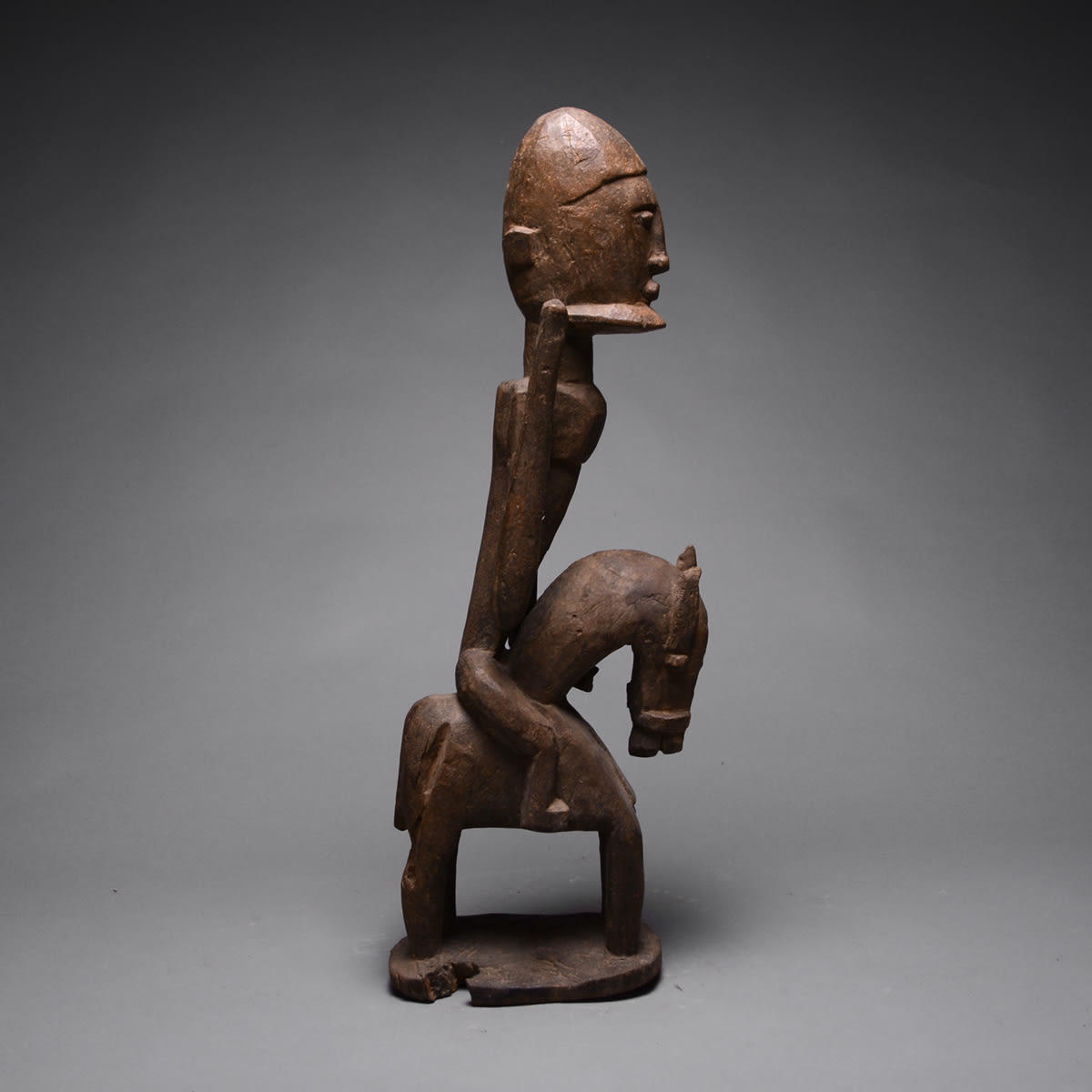African Art / Bambara Wooden Sculpture of a Donkey and Rider, 19th Century CE - 20th Century CE
Wood
height 50.8 cm
height 20 in
height 20 in
PF.4357
Further images
The visual arts are one of the most effective and powerful ways of communicating ideas. Where written language often requires lengthy study, and the spoken word often shaded with ambiguity,...
The visual arts are one of the most effective and powerful ways of communicating ideas. Where written language often requires lengthy study, and the spoken word often shaded with ambiguity, the visual can effect the viewer with an instantaneous impression that lasts a life time. The Bambara have a very complex cosmology, believing in the existence of spiritual forces who are capable of creating an atmosphere of harmony, prosperity, and well-being. In order to help explain and utilize these esoteric powers, societies were formed to teach boys through initiation how to become productive young men; helping them through the difficult stage between adolescents and adulthood. Statues were created to show initiates an ideal model of the qualities they must have- beauty, knowledge, and power. Each figure is explained to the initiates and conveys the vital force that contributes to the cohesion of the village.
These admirable virtues are beautifully depicted in this warrior figure. He is monumental in form with his straight back, defiant expression, and arm cocked ready to throw his spear. The details of headdress and container hanging at his side are cleverly worked in to give the sculpture an overall balance. There's an extraordinary sense of motion, as if the rider is momentarily frozen in time, yet continuing onwards with such force we can almost feel his momentum and the palpable fear of his opponent. As a warrior he dominates the space of the sculpture, towering above the donkey which is fashioned minimalistically. This has the desired effect of forcing our attention on the rider, especially his determined face showing not the slightest fear. This statue may only have been brought out on special occasions, intended to impress impressionable young boys, who would see in its glistening polish and powerful presence the embodiment of skill, fortitude and undaunted courage in the face of all obstacles.
These admirable virtues are beautifully depicted in this warrior figure. He is monumental in form with his straight back, defiant expression, and arm cocked ready to throw his spear. The details of headdress and container hanging at his side are cleverly worked in to give the sculpture an overall balance. There's an extraordinary sense of motion, as if the rider is momentarily frozen in time, yet continuing onwards with such force we can almost feel his momentum and the palpable fear of his opponent. As a warrior he dominates the space of the sculpture, towering above the donkey which is fashioned minimalistically. This has the desired effect of forcing our attention on the rider, especially his determined face showing not the slightest fear. This statue may only have been brought out on special occasions, intended to impress impressionable young boys, who would see in its glistening polish and powerful presence the embodiment of skill, fortitude and undaunted courage in the face of all obstacles.
Literature
V22





